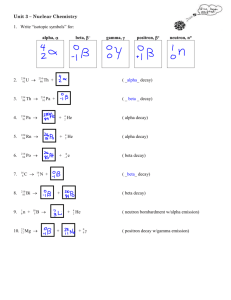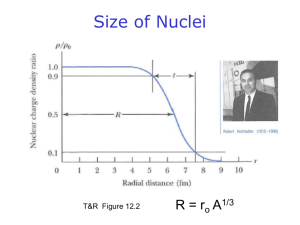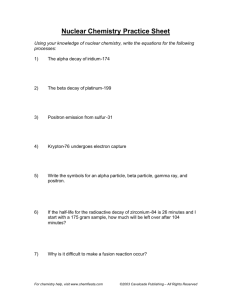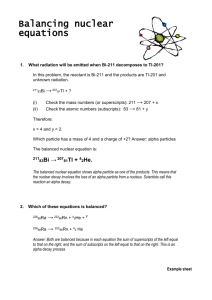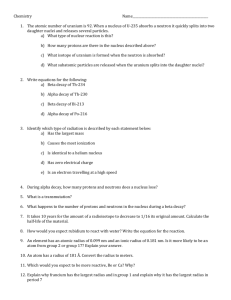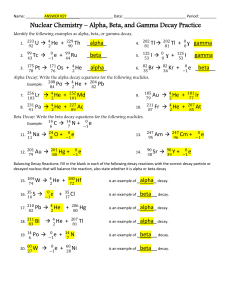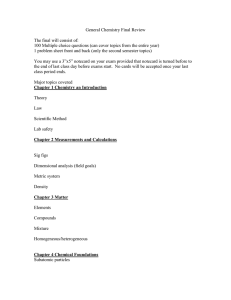pset1
advertisement
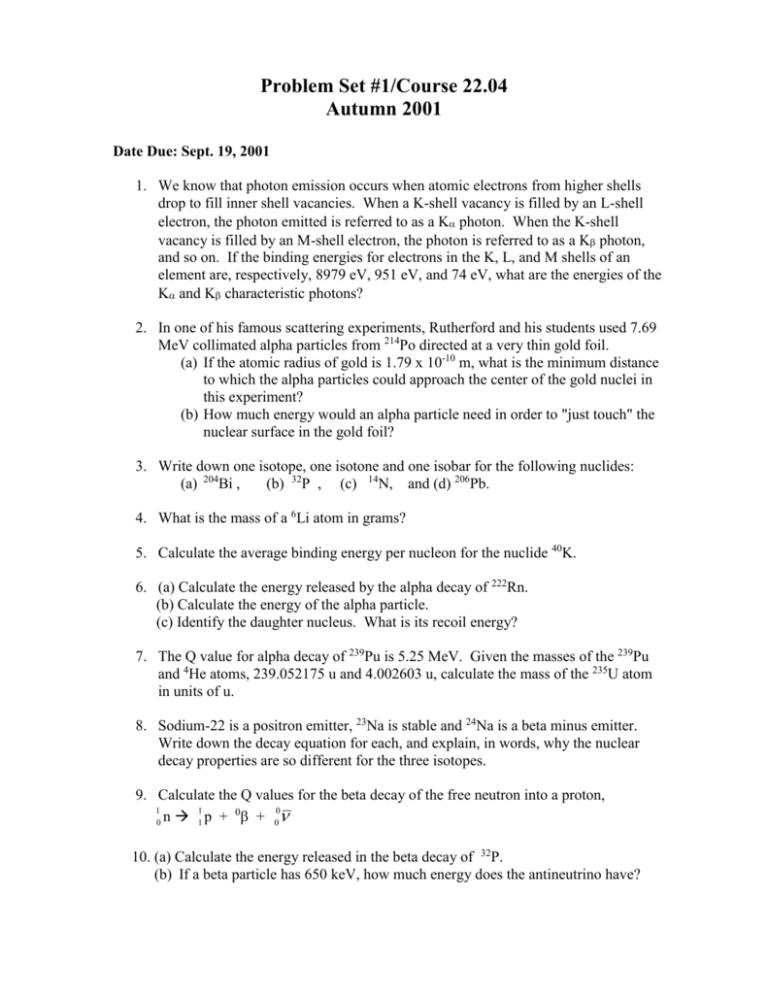
Problem Set #1/Course 22.04 Autumn 2001 Date Due: Sept. 19, 2001 1. We know that photon emission occurs when atomic electrons from higher shells drop to fill inner shell vacancies. When a K-shell vacancy is filled by an L-shell electron, the photon emitted is referred to as a K photon. When the K-shell vacancy is filled by an M-shell electron, the photon is referred to as a K photon, and so on. If the binding energies for electrons in the K, L, and M shells of an element are, respectively, 8979 eV, 951 eV, and 74 eV, what are the energies of the K and K characteristic photons? 2. In one of his famous scattering experiments, Rutherford and his students used 7.69 MeV collimated alpha particles from 214Po directed at a very thin gold foil. (a) If the atomic radius of gold is 1.79 x 10-10 m, what is the minimum distance to which the alpha particles could approach the center of the gold nuclei in this experiment? (b) How much energy would an alpha particle need in order to "just touch" the nuclear surface in the gold foil? 3. Write down one isotope, one isotone and one isobar for the following nuclides: (a) 204Bi , (b) 32P , (c) 14N, and (d) 206Pb. 4. What is the mass of a 6Li atom in grams? 5. Calculate the average binding energy per nucleon for the nuclide 40K. 6. (a) Calculate the energy released by the alpha decay of 222Rn. (b) Calculate the energy of the alpha particle. (c) Identify the daughter nucleus. What is its recoil energy? 7. The Q value for alpha decay of 239Pu is 5.25 MeV. Given the masses of the 239Pu and 4He atoms, 239.052175 u and 4.002603 u, calculate the mass of the 235U atom in units of u. 8. Sodium-22 is a positron emitter, 23Na is stable and 24Na is a beta minus emitter. Write down the decay equation for each, and explain, in words, why the nuclear decay properties are so different for the three isotopes. 9. Calculate the Q values for the beta decay of the free neutron into a proton, 0 1 1 n 1 p + 0+ 0 0 (a) Calculate the energy released in the beta decay of 32P. (b) If a beta particle has 650 keV, how much energy does the antineutrino have?


